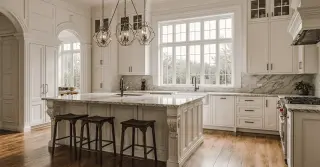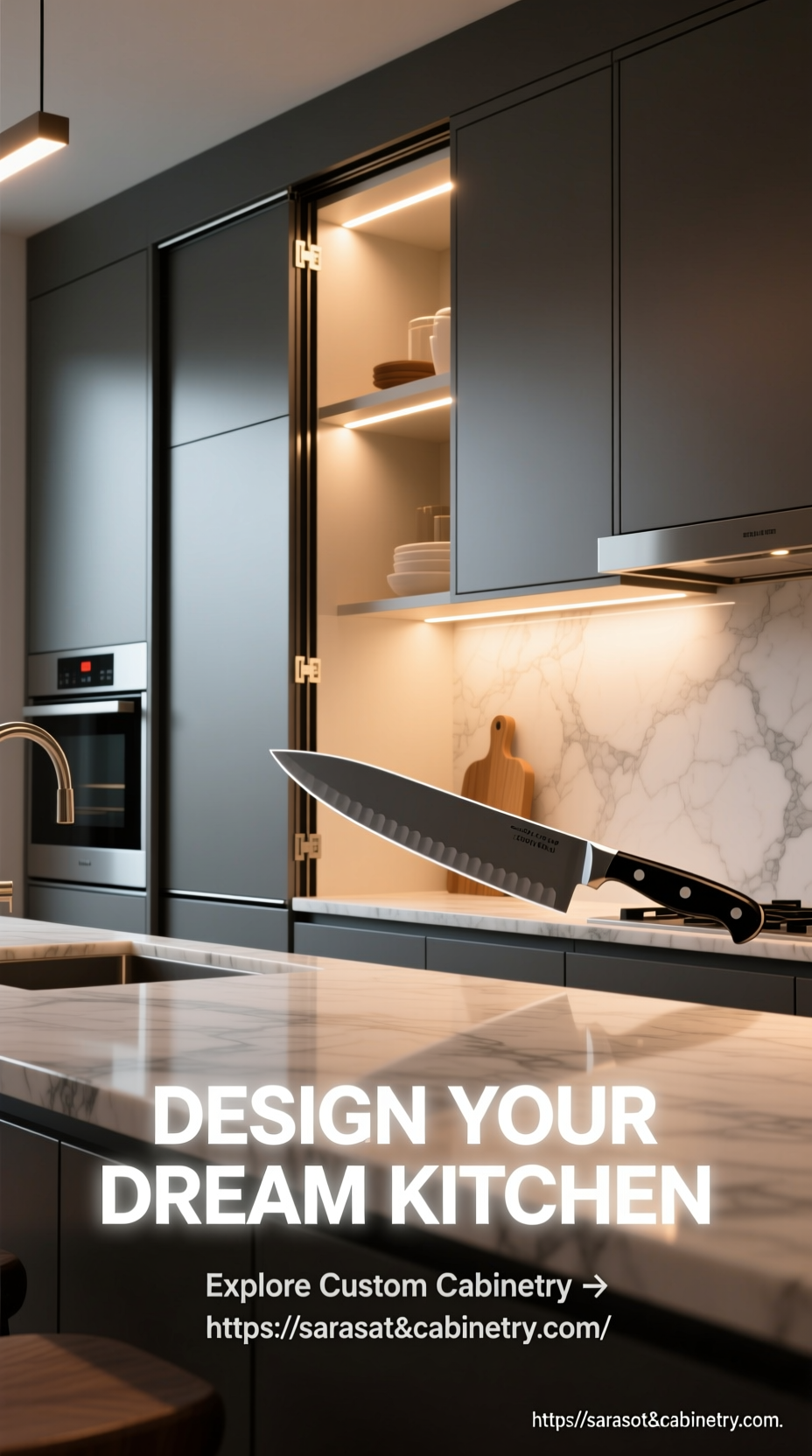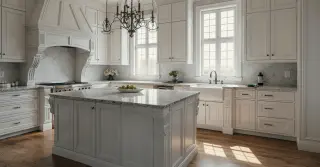Traditional Style Kitchen

Traditional Style Kitchen: Timeless Elegance and Functional Design
A Traditional Style Kitchen embodies a harmonious blend of timeless elegance and efficient utility, creating a space where cooking inspiration ignites and family moments flourish. Characterized by its warm, inviting ambiance, this kitchen style embraces heritage textures such as rich hardwoods, granite or marble worktops, and custom-made cabinets. The precision in all components—from the trim work and door panels to the decorative fittings—ensures that a traditional kitchen is both aesthetically pleasing but also crafted for longevity. Bespoke cabinets provide essential influence in achieving this timeless appeal, offering both storage efficiency and a sense of upscale refinement. Each cabinet, regularly designed with artistic engravings, serves as a focal point while harmonizing with the kitchen layout.
Lighting in a traditional kitchen design is fundamental to emphasize design elements and foster a warm ambiance. Warm, ambient lighting, such as pendant lights over the kitchen island or sconces flanking a window, brings out material subtleties of the selected finishes. Additionally, integrated lights highlight countertops, ensuring utility combined with aesthetic charm. Attention to lighting detail emphasizes the kitchen’s layered design, combining usability with visual interest, which is why many homeowners invest in high-quality fixtures that enhance traditional aesthetics.
The layout of a traditional kitchen balances workflow and communal engagement. The classic work triangle—comprising the stove, refrigerator, and sink—is thoughtfully arranged to facilitate smooth movement during meal preparation. Central countertops serve as multifunctional hubs but also promote social interaction. The inclusion of built-in benches or stylish bar stools further enhances the kitchen’s role as a communal hub. By combining utility and comfort, the traditional layout keeps the kitchen efficient for routine use while maintaining a timeless appeal.
Materials and finishes are central to the authenticity of a traditional kitchen design. Premium timber surfaces, whether in cherry, oak, or beech, provide longevity and aesthetic warmth. Artisan-crafted stone tops, provide resilience and understated luxury. Cupboards finished in muted tones or traditional white, may feature decorative moldings or glass-front doors that enhance visual complexity. These crafted elements boost elegance while demonstrating artisanal skill, a defining trait of heritage designs.
Storage solutions in a traditional kitchen are crafted for practicality and style. Pull-out drawers, spice racks, and corner carousels optimize space, making organization effortless. Open shelving is strategically incorporated to display fine china, glassware, or artisanal kitchenware, enhancing charm and individuality. Bespoke larder designs with movable shelving cater to diverse storage needs, allowing for a polished, organized environment. Professional designers highlight the importance of intelligent organization.
Color palettes in a traditional kitchen adopt subdued shades promoting serenity and elegance. Ivory, taupe, and light gray tones create a serene backdrop for wooden accents and metallic fixtures. Richer shades, such as deep burgundy or navy, may be introduced through cabinetry, upholstery, or decorative elements, adding dimension and focus. These shades blend with authentic textures, enhancing timeless style while enabling custom accents.
Details in a traditional kitchen design combine beauty with practicality. Architectural moldings, carved panels, and accent supports contribute depth and refinement. High-quality hardware, including brass knobs, cup pulls, and ornate handles underscores artisanal precision. Even the choice of backsplash, often featuring subway tiles, intricate mosaics, or natural stone contributes to the kitchen’s timeless charm. All elements, minor or major, are thoughtfully chosen to maintain harmony.
Appliances in a traditional kitchen blend seamlessly with aesthetics while providing practical performance. Traditional cooktops in polished or metal finishes, deliver performance without sacrificing elegance. Built-in fridges, washers, and wine storage keep a unified look while supporting modern needs. Many homeowners also incorporate specialty appliances, such as warming drawers or built-in coffee stations, to elevate the kitchen’s versatility while preserving its classic character.
Designing a classic kitchen requires harmonizing elegance with function, heritage with innovation, and comfort with social interaction. Every element, from storage to illumination, surfaces to tones, forms a unified design. Experts stress incorporating personal and legacy items to enrich the classic kitchen setting. Such personalization keeps the space visually enduring and emotionally meaningful.
Traditional kitchens foster experiences beyond meal-making. It encourages family bonding, narratives, and communal dining. Whether enjoying casual morning meals or festive dinner celebrations, it serves as the central hub, radiating coziness, sophistication, and charm. By blending timeless concepts, fine materials, and practical organization, the space continues to charm while supporting everyday use for decades.
All features in a classic kitchen reflect lasting artistry. From premium hardwoods and custom cabinets to nuanced illumination and selected equipment, each component contributes to a cohesive, elegant environment. Classic kitchens remain favored by individuals appreciating craftsmanship, practicality, and legacy. By marrying practicality with visual sophistication, the traditional kitchen proves that style and function can coexist beautifully, creating a space where both cooking and connection flourish.




